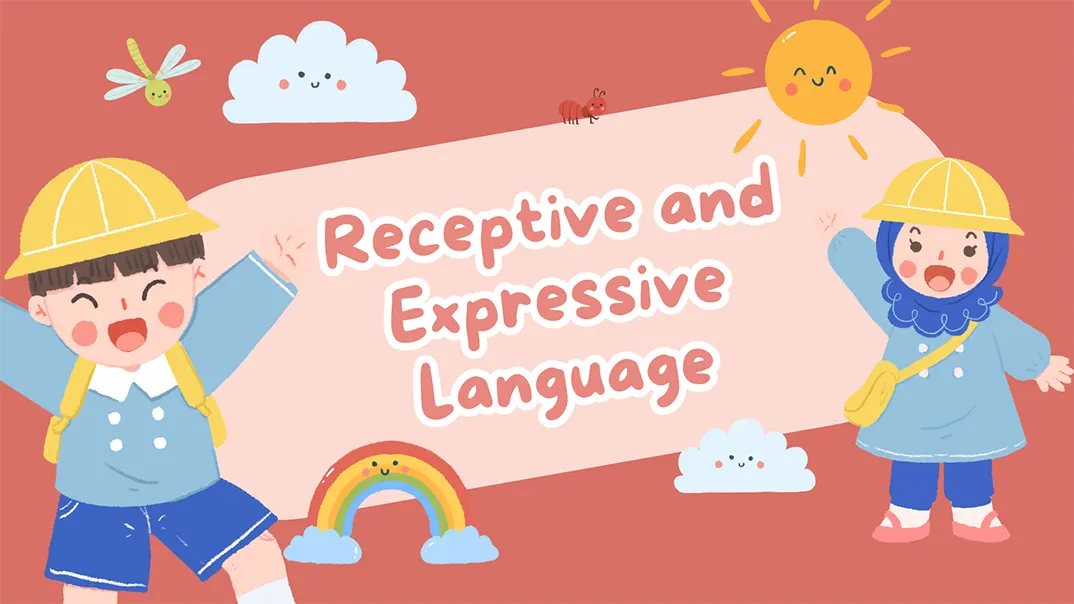Some children seem to understand everything you say, yet rarely speak. Others talk nonstop but often miss the meaning of what’s being said to them. These differences can be confusing for parents and teachers trying to gauge a child’s communication skills. Are these signs of a delay, or just part of typical development? To answer that, we first need to understand a fundamental question: What is receptive and expressive language?
Receptive and expressive language are the two core components of communication in early childhood. Receptive language is the ability to understand spoken or written language, while expressive language is the ability to convey thoughts and ideas through words, gestures, or symbols. Together, they influence everything from learning and social interaction to emotional development. This article explains how these skills emerge, what factors affect their growth, and how adults can provide the right support.
Whether you’re a parent, teacher, or caregiver, understanding receptive and expressive language can help you better support the children in your care. Keep reading to gain the insights you need.
Czym jest język receptywny?

Receptive language refers to the ability to receive, understand, and process the language we hear, read, or observe in communication. In early childhood, it is the foundation for interpreting spoken words, recognizing vocabulary, understanding sentences, and grasping the meaning behind gestures, tone, and facial expressions.
For young children, strong receptive abilities are foundational. They help a child understand what others are saying, recognize their own name, follow basic instructions like “sit down” or “get your shoes,” and even pick up on emotional cues through language. Without these abilities, expressive skills struggle to develop naturally. This is why professionals emphasize that receptive and expressive language must be nurtured together, but it often begins with understanding what a child can take in and comprehend.
Key Receptive Language Skills
Receptive language is more than just hearing words—it involves several interconnected skills that allow children to process and understand what is being communicated. These skills develop gradually and are essential for successful learning, social interaction, and emotional development. Below are the core receptive language abilities commonly observed in early childhood:
- Auditory Processing: The ability to hear and correctly interpret spoken words.
- Vocabulary Understanding: Recognizing and understanding the meaning of familiar and new words.
- Following Directions: Listen to and act on simple or multi-step instructions.
- Question Comprehension: Understanding and responding appropriately to different types of questions (e.g., “what,” “where,” “why”).
- Zrozumienie koncepcji: Grasping abstract and spatial concepts like “before,” “after,” “in,” “under,” “more,” or “less.”
- Listening for Detail: Picking up specific information in longer statements or stories.
- Nonverbal Language Interpretation: Interpreting tone, pitch, and context to support understanding.
Examples of Receptive Language in Action
To fully appreciate the role of receptive language in a child’s development, it’s important to look at how it appears in real-life situations. These everyday moments often seem simple on the surface, but they reveal just how essential receptive language skills are for processing spoken language, making connections, and responding appropriately.
- A toddler hears, “Time to clean up!” and begins placing toys back in the bin.
- A preschooler hears their name called from across the room and turns to look.
- During story time, a child listens attentively and answers a question like, “What happened next?”
- When a parent says, “Put your shoes by the door,” the child follows through without further prompting.
- In a classroom, a child responds appropriately when a teacher says, “If you’re wearing red, stand up.”
Czym jest język ekspresywny?
Expressive language is the ability to use words, gestures, signs, or symbols to communicate thoughts, needs, and ideas to others. While receptive language is about understanding input, expressive language is about producing output. It’s how children let the world know what they’re thinking, feeling, or needing. Whether it’s saying “milk” when they’re thirsty or telling a friend about a favorite toy, expressive language plays a central role in how young children interact with the people around them.
In the earliest months of life, expressive language begins with crying, cooing, and babbling—basic sounds that serve as a baby’s first communication tools. As children grow, their expressive skills evolve into more sophisticated forms: using words, combining them into sentences, and applying correct grammar. These developments allow children to ask questions, express emotions, describe experiences, and engage in conversation.
Without well-developed expressive language, a child may understand everything being said but struggle to respond or express themselves clearly. This imbalance between receptive and expressive language can lead to frustration, social challenges, and delays in academic learning. Recognizing and supporting expressive rozwój języka is essential for communication and building self-confidence and emotional intelligence.
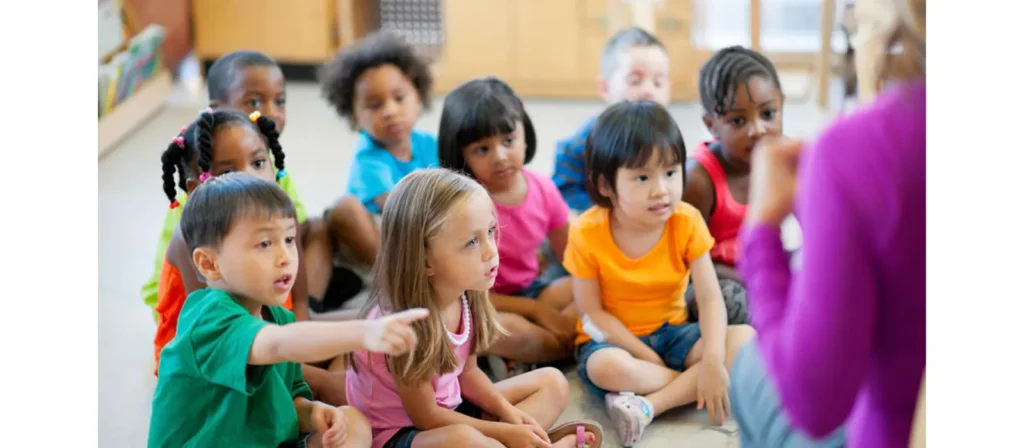
Key Expressive Language Skills
Developing strong expressive language abilities allows children to clearly communicate their thoughts, feelings, and intentions with others. These skills go far beyond simply learning words—they involve knowing how to put those words together meaningfully, use them in the right social context, and adapt communication depending on the listener or situation. Expressive skills are essential for participating in conversations, asking for help, sharing stories, and forming social bonds.
- Vocabulary Use: The ability to retrieve and use appropriate words when speaking or writing.
- Sentence Formation: Combining words to form clear, grammatically correct phrases and sentences.
- Narrative Skills: Telling stories, recounting events, or explaining sequences of actions in an organized way.
- Question Asking: Forming questions to gain information, seek clarification, or express curiosity.
- Verb Usage and Grammar: Using correct verb tenses, pronouns, plurals, and other grammar structures.
- Initiating and Maintaining Conversation: Start conversations and keep them going with appropriate responses.
- Using Nonverbal Communication: Supplementing spoken words with facial expressions, gestures, and body language for more effective expression.
Examples of Expressive Language in Action
Expressive language refers to a child’s ability to convey thoughts, feelings, and ideas through words, gestures, facial expressions, and tone. Strong expressive language skills help children participate in conversations, share experiences, and demonstrate creativity in storytelling or imaginative play. Here are some examples of expressive language skills in early childhood:
- A toddler points to the fridge and says, “Juice!”: They’re using words and gestures to express a need.
- A preschooler sees a dog and exclaims, “That dog is big and fluffy!”: They’re using descriptive language to share an observation.
- When a child says, “Let’s be pirates!” during playtime, they’re initiating imaginative play through expressive speech.
- A child answers the question, “What did you do at school today?” with, “We painted a rainbow and sang songs.”: They’re practicing narrative skills and sequencing.
- A kindergartener politely says, “Can I have a turn after you?”: They’re applying expressive language in a social setting.
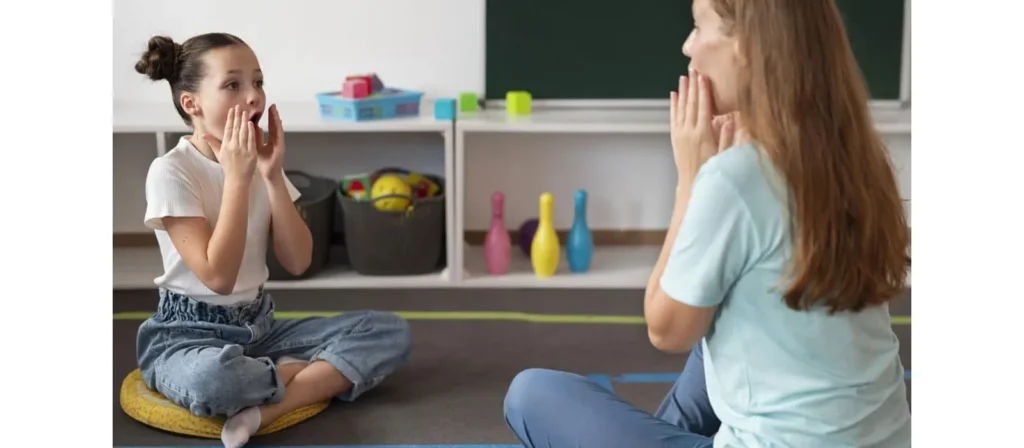
Why Are Receptive and Expressive Language Important?
Receptive and expressive language are the cornerstones of communication and learning in early childhood. They shape how children make sense of the world and how they interact with it. Understanding their importance helps parents, educators, and specialists support a child’s development with greater intention.
Support Early Learning and Academic Success
Children with strong receptive and expressive language skills are better prepared to engage in classroom activities, understand lessons, and express their understanding. Receptive abilities help them follow directions and absorb new information, while expressive skills allow them to ask questions, participate in discussions, and demonstrate knowledge. A solid foundation in language is directly tied to early literacy, vocabulary growth, and school readiness.
Foster Strong Social and Emotional Connections
Language is how we connect with others—and for children, it starts with being able to understand (receptive) and respond (expressive). These skills are essential for making friends, resolving conflicts, and expressing feelings. A child who can say, “I’m sad” or “I need help” is more likely to be emotionally regulated and socially confident. Without effective communication, children may withdraw or act out, simply because they can’t express what they’re feeling.
Encourage Independence and Problem Solving
Children become more independent when they understand what’s expected of them and explain what they want or need. Receptive and expressive language help children follow routines, make choices, and solve everyday problems. For instance, a child who can say, “I spilled my juice” or “Can I have another one?” actively engages in self-advocacy, a skill that fosters autonomy and resilience.
Wyślij nam wiadomość, jeśli masz jakieś pytania lub chcesz poprosić o wycenę. Nasi eksperci odpowiedzą Ci w ciągu 48 godzin i pomogą Ci wybrać odpowiedni produkt, którego potrzebujesz.
They Strengthen Cognitive Development
Language is deeply tied to how children think and process the world around them. As children build expressive vocabulary and understand more complex sentences, their ability to reason, plan, and imagine also grows. Conversations help develop memory, cause-and-effect understanding, and abstract thinking. In essence, receptive and expressive language shape how children learn to think.
Help Identify Developmental Delays Early
Tracking receptive and expressive language milestones allows caregivers and educators to recognize potential delays or disorders early on. If a child understands language but struggles to speak, or vice versa, it could signal a need for further assessment. Early intervention is key to addressing speech and language difficulties before they impact academic and social development.
Build Confidence and Self-Esteem
When children can express themselves clearly and feel understood, it boosts their confidence. Effective communication reassures children that their voice matters, whether it’s telling a story, asking for help, or participating in a group activity. This sense of agency helps them take initiative, engage with peers, and feel a sense of belonging in any environment.
How Receptive and Expressive Language Work Together?
The relationship between receptive and expressive language is dynamic, interdependent, and essential to meaningful communication. They operate as a tightly connected system—when one grows, the other is stimulated. Children who understand language more deeply can express it more confidently, and those who actively use language develop a more nuanced understanding of it. Let’s explore how these two vital language skills support and enhance one another in early childhood development.

1. Receptive Language Enables Expressive Output
Understanding always comes before speaking. A child cannot effectively express ideas they haven’t first understood. For example, hearing the word “apple” many times in different contexts helps the child build a mental image and meaning, which later allows them to use the word meaningfully in speech. Receptive language provides the necessary vocabulary, sentence structures, and context to form the raw expression material. Without this input, expressive language has no foundation on which to stand.
2. Expressive Practice Reinforces Comprehension
Interestingly, using language also deepens a child’s understanding of it. When children attempt to express thoughts through words, gestures, or even storytelling, they actively organize what they’ve internalized. This act of producing language pushes them to reflect on what they know, fill in gaps, and make connections. Expressive activities like describing pictures or recounting events allow children to rehearse and reinforce their receptive knowledge, creating a powerful learning loop.
3. Interactive Dialogue Strengthens Both Systems
Natural conversations are one of the most effective ways to simultaneously build receptive and expressive language. In dialogue, children take turns listening and responding, constantly shifting between understanding and producing language. These exchanges train their brains to process incoming information and formulate appropriate responses. The back-and-forth rhythm of conversation supports vocabulary growth and listening, memory, and attention—skills crucial for well-rounded communication.
4. Language Development Depends on Balance
When one language domain is significantly stronger than the other, it can disrupt a child’s ability to communicate effectively. A child with strong receptive language but weak expressive skills might understand instructions but struggle to ask questions or share ideas. Conversely, a child who talks a lot but doesn’t truly grasp what others are saying may appear confident but struggle in learning or group settings. Balanced development ensures that children can absorb and contribute meaningfully in social and educational contexts.
5. Integrated Growth Leads to Confident Communication
When receptive and expressive language develops in harmony, children become confident communicators. They can listen, understand, reflect, and respond—all essential for forming relationships, succeeding in school, and navigating new experiences. This synergy builds not just linguistic ability, but also self-assurance, problem-solving capacity, and emotional intelligence. The more these two systems grow together, the more capable and connected a child becomes.
Differences Between Receptive and Expressive Language
While receptive and expressive language work closely together, they serve distinct roles in communication. Understanding these differences is key to identifying strengths, spotting potential delays, and supporting balanced development in young children. Below, we explore the major differences between the two, from cognitive processes to observable behaviors.

Primary Function
- Receptive language: Involves the ability to understand spoken or written words, phrases, and concepts. This includes listening, reading, and interpreting tone, intent, or gestures. A child using receptive skills might follow directions, recognize vocabulary in a story, or respond nonverbally to a question.
- Expressive language: Refers to the ability to convey thoughts, ideas, needs, or emotions through words, gestures, or writing. A child using expressive language might label objects, ask questions, describe experiences, or retell events using appropriate vocabulary and grammar.
Developmental Timing
- Receptive language: Usually develops earlier, often beginning in infancy with the recognition of sounds, intonation, and familiar words. It serves as the groundwork upon which expressive abilities are built. Children often understand far more than they can say.
- Expressive language: Tends to develop after receptive skills are in place. It requires not only knowing words but being able to retrieve and organize them meaningfully. Expressive growth often follows a child’s increasing exposure to and comprehension of spoken language.
Mode of Use
- Receptive language: Engages listening, reading, and visual observation to decode meaning. This may involve understanding single words, following multi-step directions, or interpreting implied meaning in a conversation.
- Expressive language: Engages speaking, writing, gestures, and facial expressions to encode meaning. This could mean forming grammatically correct sentences, using appropriate vocabulary, and adjusting tone based on the listener.
Impact on Learning and Interaction
- Receptive language: Strong comprehension helps children follow classroom routines, understand new concepts, and engage with books or multimedia resources. Weaknesses here may cause children to miss key instructions or misunderstand lessons.
- Expressive language: Strong expression allows children to participate in group discussions, ask for clarification, collaborate with peers, and demonstrate understanding through verbal or written responses.
Five Language Processing Areas in Receptive vs. Expressive Language
| Language Area | Język receptywny | Język ekspresywny |
|---|---|---|
| Phonology | Recognizing and distinguishing sounds in speech; identifying similar or different sounds (e.g., /b/ vs. /p/). | Accurately produce sounds and use correct pronunciation in speech. |
| Morphology | Understanding word structures, tense, plurals, and possessives (e.g., “walk” vs. “walked”). | Using correct word forms and endings when speaking or writing (e.g., “walked” instead of “walk”). |
| Syntax | Comprehending sentence structure and word order to interpret meaning. | Constructing grammatically correct sentences with appropriate word order. |
| Semantics | Understanding the meaning of words and sentences, including context-based interpretation. | Selecting precise vocabulary to express the intended meaning clearly. |
| Pragmatics | Interpreting social language cues such as tone, gestures, and intention. | Adapting language to fit different situations, audiences, or conversational purposes. |
Factors Affecting Receptive and Expressive Language Development
The growth of receptive and expressive language in early childhood is not a fixed process—a complex interaction of biological, social, and environmental influences shapes it. Each factor can either accelerate progress or create challenges, depending on how it interacts with a child’s unique abilities and circumstances. Understanding these elements enables caregivers and educators to create conditions that nurture balanced language development.
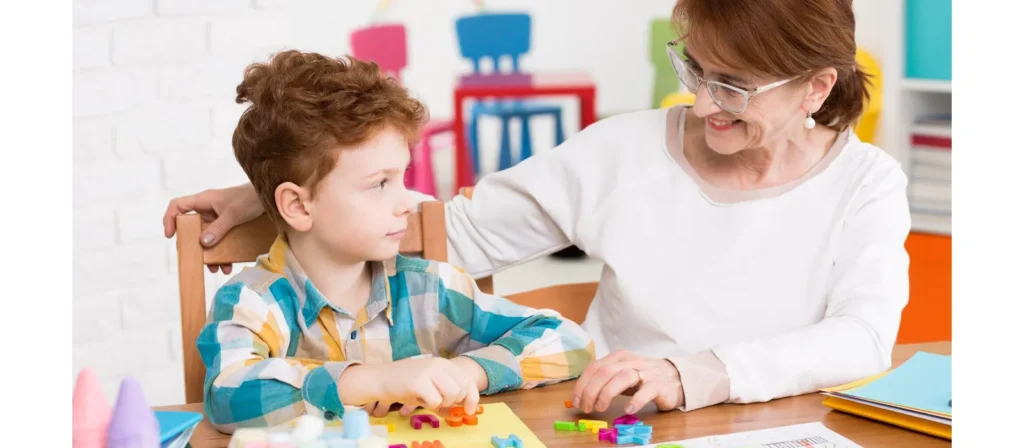
Biological and Genetic Influences
A child’s neurological makeup, hearing ability, and genetic predispositions all have a significant impact on language development. Conditions such as hearing loss, auditory processing disorders, or certain developmental syndromes can affect both the comprehension of language and the ability to produce it. Early identification of biological factors allows for timely support and intervention.
Environmental Stimulation
Children thrive in language-rich environments where they are regularly exposed to conversations, stories, and varied vocabulary. The quantity and quality of spoken language they hear daily directly shape how quickly they understand new words (receptive) and how confidently they use them in speech (expressive). A stimulating environment acts as a catalyst for vocabulary growth and communication skills.
Caregiver Interaction and Responsiveness
The way caregivers communicate with children plays a central role in shaping their language skills. Responsive interactions—such as maintaining eye contact, repeating key phrases, and expanding on a child’s attempts to communicate—help strengthen comprehension and expression. These interactions also model how language works in real-life contexts, making it easier for children to learn naturally.
Cultural and Linguistic Background
Children growing up in bilingual or multilingual homes may develop language skills differently. While they might take longer to reach certain expressive milestones in each language, they often show greater cognitive flexibility and problem-solving skills. Exposure to multiple languages enhances both receptive understanding and expressive adaptability.
Health and Nutrition
Good physical health supports brain development and speech mechanisms. Issues such as frequent ear infections or untreated hearing loss can hinder a child’s ability to understand speech clearly, while poor nutrition can affect energy levels, concentration, and overall language learning capacity. Maintaining health is a foundational part of language development.
Educational Opportunities
Access to structured learning—such as reading programs, storytelling activities, and group discussions—provides children with regular opportunities to practice both listening and speaking. These experiences build comprehension skills while encouraging confident verbal expression in a supportive setting.
Strategies to Support Receptive and Expressive Language
Strengthening receptive and expressive language in children requires a balanced approach that combines rich language input, meaningful interaction, and opportunities for active use. Whether at home, in the classroom, or during daily activities, the strategies below can help children develop the skills they need to both understand and communicate effectively.
Build a Language-Rich Environment
A child’s surroundings play a powerful role in shaping their ability to understand and use language. When the space is thoughtfully arranged, it invites children to explore words, interact with others, and connect meaning to the world around them.
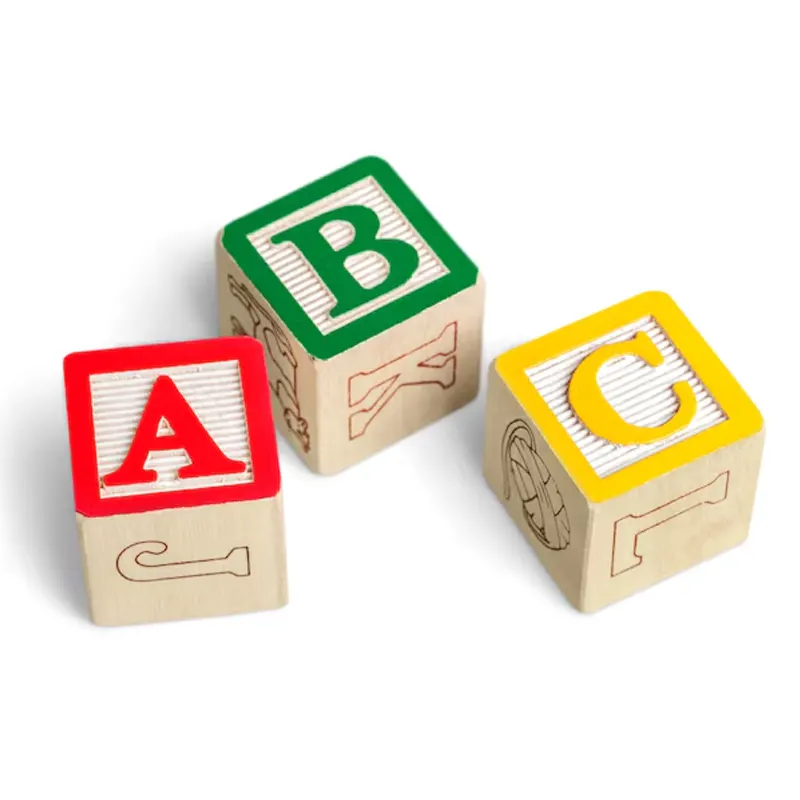
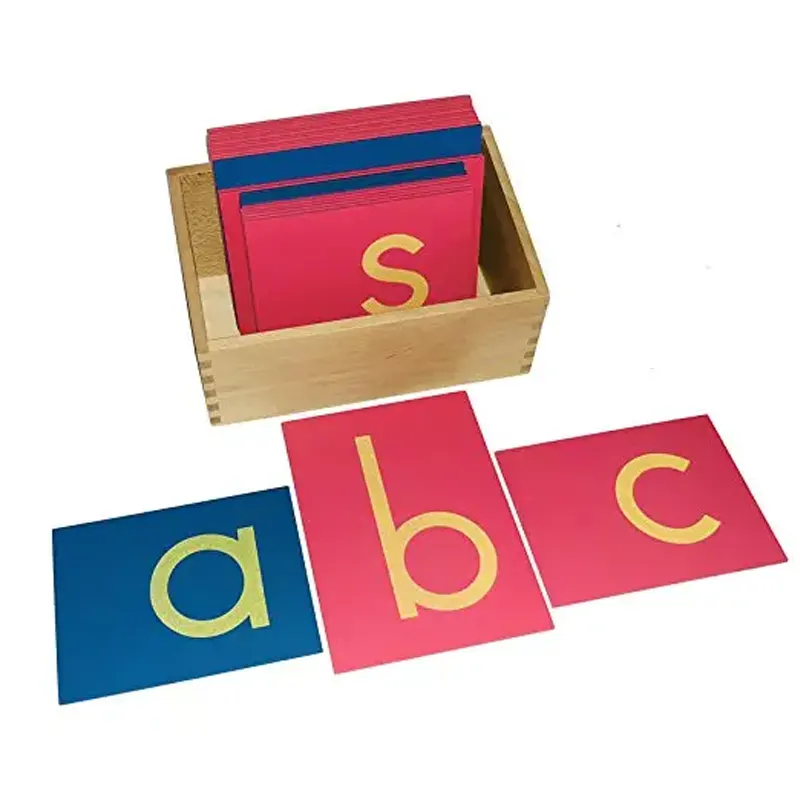
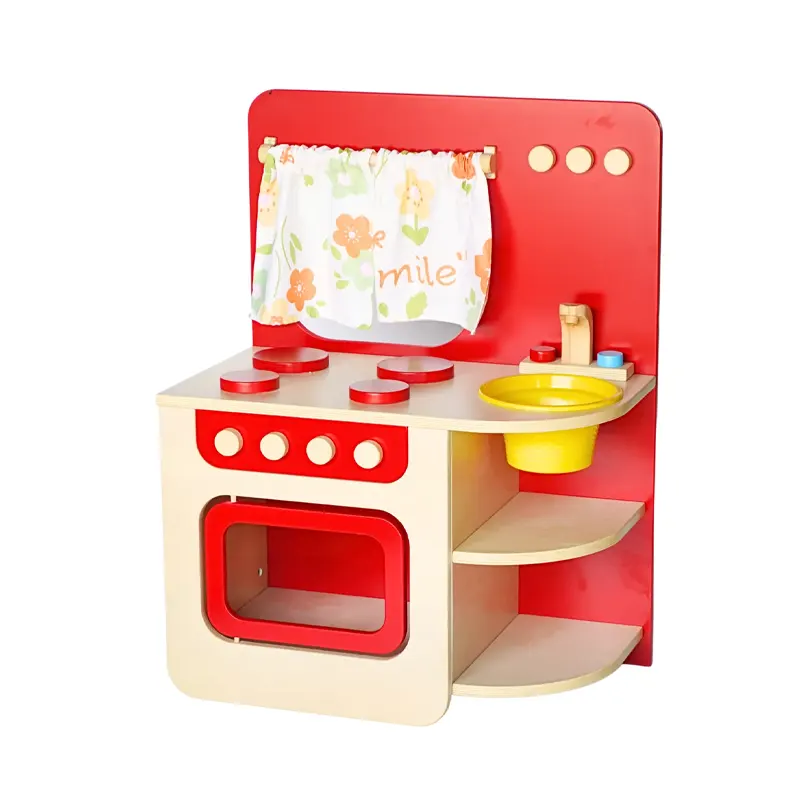
- Label everything: Add printed words and pictures to shelves, bins, and common objects to connect spoken language with visual input.
- Accessible books: Display books at child height to invite spontaneous reading and shared story moments.
- Face-to-face setup: Arrange meble do żłobka to encourage interaction and natural conversation between children.
- Visual supports: Use posters, charts, and picture schedules to reinforce understanding and structure routines.
- Open-ended materials: Provide blocks, puppets, costumes, and other flexible tools that inspire storytelling and creative dialogue.
- Quiet, focused spaces: Minimize background noise and distractions to support clear listening and expressive attempts.
Wyślij nam wiadomość, jeśli masz jakieś pytania lub chcesz poprosić o wycenę. Nasi eksperci odpowiedzą Ci w ciągu 48 godzin i pomogą Ci wybrać odpowiedni produkt, którego potrzebujesz.
Model and Expand on Children’s Speech
Children learn how to speak more effectively when they hear adults build on their attempts. If a child says, “Bird fly,” responding with “Yes, the bird is flying high in the sky” reinforces correct grammar and adds detail. This method affirms the child’s effort while providing a richer language model. To apply this consistently:
- Echo and slightly expand what the child says.
- Avoid correcting in a way that disrupts confidence—rephrase instead.
- Use parallel talk by describing what the child is doing in real time.
This technique helps children internalize sentence patterns and descriptive vocabulary, boosting both receptive and expressive growth.
Use Everyday Routines for Language Practice
Daily routines offer some of the richest and most consistent opportunities for language learning. Because these activities repeat and happen in familiar contexts, children can hear the same words and phrases often, helping them absorb new vocabulary and practice using it meaningfully. From getting dressed to mealtime and cleanup, every part of the day can become a natural moment for building receptive and expressive language skills.
Encourage Interactive Storytelling and Reading
Books are a source of information and a bridge between understanding and speaking. Reading aloud should be more than turning pages—it should be a shared experience where children predict, question, and retell events. When teachers pause to ask, “Why do you think the character did that?” or “What might happen next?” they invite children to process meaning and articulate their ideas. Practical ways to integrate interactive reading:
- Use dialogic reading, pausing to invite children’s responses.
- Role-play scenes from a book to reinforce vocabulary and sequencing.
- Link the story to real-life events (“This reminds me of the time we went to the park—what did you see there?”).
Use Visual and Contextual Supports
Young learners often need more than spoken language to grasp new concepts. Pairing words with visuals or gestures bridges the gap between hearing and understanding. For example, holding up a picture of a “volcano” while explaining it ensures the child connects the word to its meaning. Ways to embed visual support:
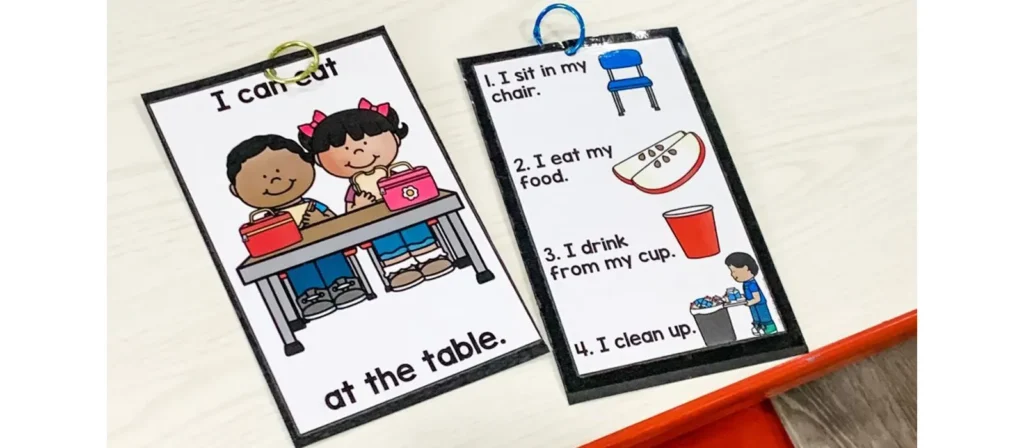
- Picture schedules: Help children anticipate what’s next and understand daily transitions.
- Visual story cues: Use sequencing cards or drawings to support storytelling and recall.
- Hands-on learning: Link vocabulary with action—like stirring when learning “mix,” or jumping to show “bounce.”
Encourage Active Listening
Active listening is more than simply hearing words—it is the ability to focus, process meaning, and respond thoughtfully. In early childhood, developing this skill is essential for building strong receptive language, as children learn to interpret tone, context, and vocabulary. At the same time, active listening naturally supports expressive language because it equips children with the context and ideas they need to respond accurately and meaningfully.
- Use listening games: Play activities like “Simon Says,” “Follow the Leader,” or “Sound Hunt,” where children must listen carefully to act correctly.
- Model listening behaviors: Show eye contact, nodding, and verbal acknowledgment (“I see, you’re saying…”) so children can imitate attentive posture and responses.
- Ask for recall or paraphrasing: After giving instructions or telling a short story, invite children to repeat the key points in their own words.
Create Opportunities for Peer-to-Peer Communication
Peers are powerful motivators for language use because conversations between equals often feel more relaxed and engaging. Pairing children for a project or game encourages them to listen attentively and respond appropriately. Practical peer activities:
- Partner reading or storytelling.
- Small group problem-solving tasks.
- “Show and tell” is where children ask each other follow-up questions.
These exchanges help children practice understanding others’ ideas and articulating their own in a natural, social context.
Support Language Through Play and Activities
Play is more than just fun—it’s a vital context for language development. Through imaginative play, hands-on activities, and shared games, children practice listening, following directions, taking turns, asking questions, and telling stories. These interactions naturally support both receptive and expressive language, helping children build vocabulary, sentence structure, and social communication in a relaxed and engaging environment.
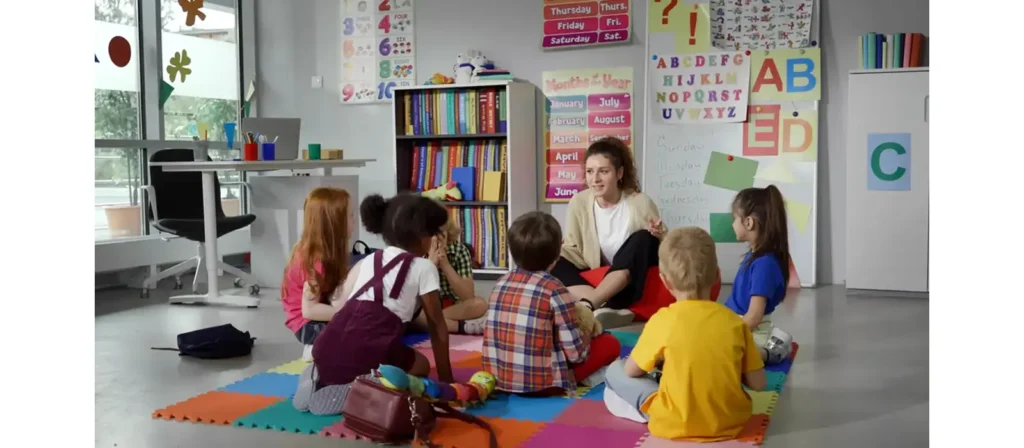
- Pretend Play: Doctor’s Office
Set up a pretend doctor’s office using toy medical tools, stuffed animals as patients, and clipboards or note cards. Children take turns being the doctor, nurse, or patient. This encourages them to understand questions (“Where does it hurt?”), follow role-specific instructions, and use expressive language to describe symptoms or treatments. - Story Retelling with Props
After reading a favorite picture book, invite children to retell the story using puppets, toys, or drawn characters. This activity builds receptive language through listening and understanding the original narrative and strengthens expressive skills by organizing thoughts, using sequencing words, and speaking in full sentences during retelling. - Simon Says with a Twist
Add a creative twist to the classic game by using more detailed or multi-step commands, such as “Touch your toes, then hop like a frog.” This helps children practice listening carefully and processing directions (receptive), and when they take a turn being “Simon,” they practice giving clear instructions (expressive). - Mystery Bag Game
Fill a bag with familiar objects that vary in shape and texture. Without looking, children reach inside, feel an item, and describe it out loud before guessing what it is. This activity targets expressive language through descriptive vocabulary and supports receptive skills as children respond to guiding questions like “Is it soft?” or “What do you feel?” - Obstacle Course with Verbal Cues
Create a simple obstacle course at home or outdoors using pillows, cones, or classroom furniture. Give step-by-step verbal instructions (“Crawl under the table, then jump over the cushion”). Children must listen and respond physically (receptive), and then can be invited to describe their steps afterward (expressive), reinforcing both language domains through action and reflection.
FAQs About Receptive and Expressive Language Skills
- At what age do receptive and expressive language skills typically develop?
Receptive language begins developing from birth, as infants recognize familiar voices and respond to tone. By 12 months, most children understand simple words and commands. Expressive language usually follows, with first words emerging around one year and more complex sentences forming between ages 2 and 4. However, the pace can vary depending on exposure, environment, and individual differences. - Is it normal for a child to understand more than they can say?
Yes, this is very common. Receptive language typically develops earlier and faster than expressive language. Many toddlers may follow complex instructions before they can form full sentences. The gap often narrows as vocabulary and confidence increase. - What Is Receptive and Expressive Language Disorder?
It’s a communication disorder where a child struggles to understand (receptive) or express (expressive) language, or both. They may have trouble following instructions, answering questions, or forming clear sentences. This goes beyond normal delays and often requires support from a speech-language pathologist for proper diagnosis and treatment. - When should I seek help from a speech-language pathologist?
If your child shows consistent difficulties understanding or using language, especially if it’s affecting learning or social development, it’s best to consult a professional. Early intervention is highly effective in improving receptive and expressive language outcomes. - What activities can strengthen both receptive and expressive skills at the same time?
Storytelling with open-ended questions, role-playing games, and collaborative building or art projects is highly effective. These activities require children to listen carefully and respond verbally.
Wniosek
Receptive and expressive language skills are the foundation of a child’s ability to learn, connect, and thrive in social and academic environments. Receptive language allows children to absorb meaning, follow directions, and make sense of the world, while expressive language empowers them to share their thoughts, needs, and creativity. These two abilities develop in constant interaction—strong comprehension supports richer speech, and confident speaking reinforces deeper understanding.
By intentionally creating a language-rich environment, integrating interactive reading, encouraging active listening, and offering opportunities for peer communication, parents and educators can help children progress in both areas simultaneously. The strategies outlined in this article are not one-time activities but habits to weave into daily routines. Whether it’s through storytelling, play, visual cues, or thoughtful questioning, each interaction becomes a chance to strengthen a child’s voice and their understanding of others.

